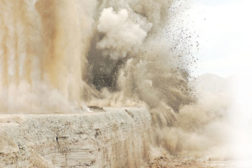Home » Keywords: » respiratory disease
Items Tagged with 'respiratory disease'
ARTICLES
A FairWarning story
Noisy, but that’s not all
Leaf blowers flagged as prodigious polluters -- and possible health threat
September 20, 2017
CDC: up to 40 percent of U.S. deaths each year are preventable
-92,000 from heart disease alone
May 5, 2014
Become a Leader in Safety Culture
Build your knowledge with ISHN, covering key safety, health and industrial hygiene news, products, and trends.
JOIN TODAYCopyright ©2024. All Rights Reserved BNP Media.
Design, CMS, Hosting & Web Development :: ePublishing







